Xiaodai Dong
Distributed Reconfigurable Intelligent Surfaces for Energy Efficient Indoor Terahertz Wireless Communications
Oct 12, 2022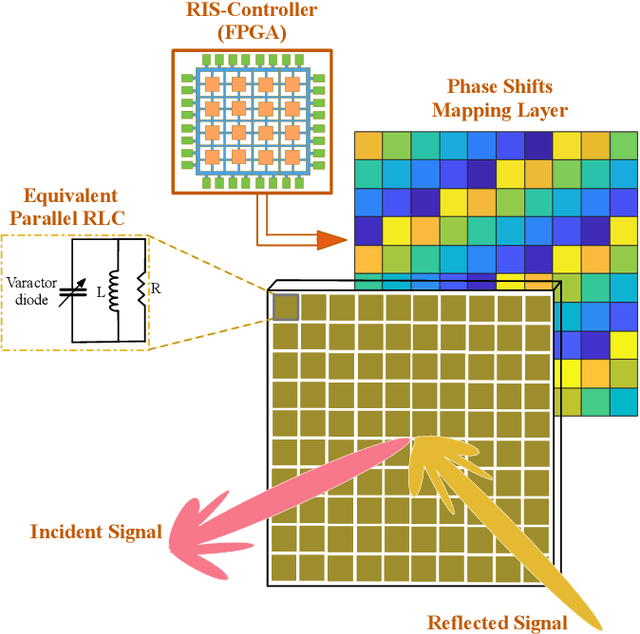
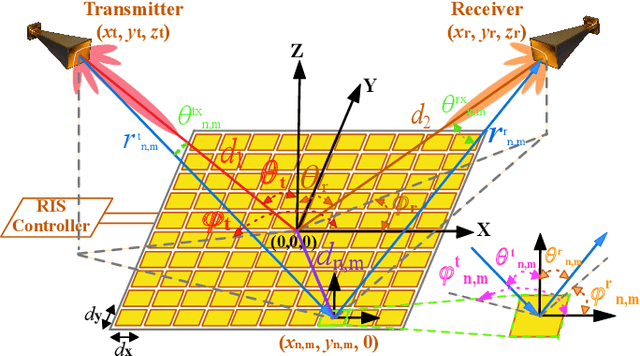
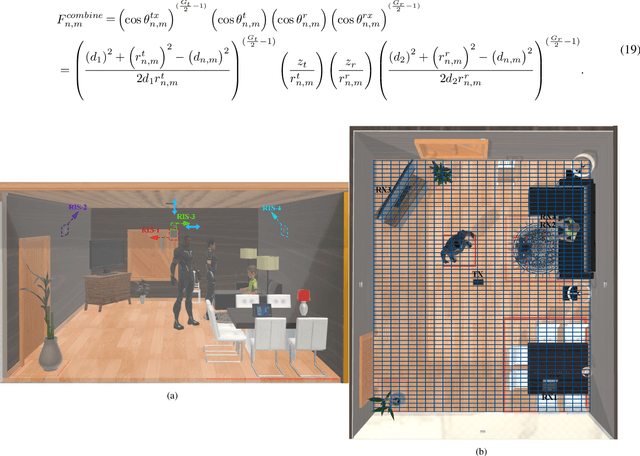
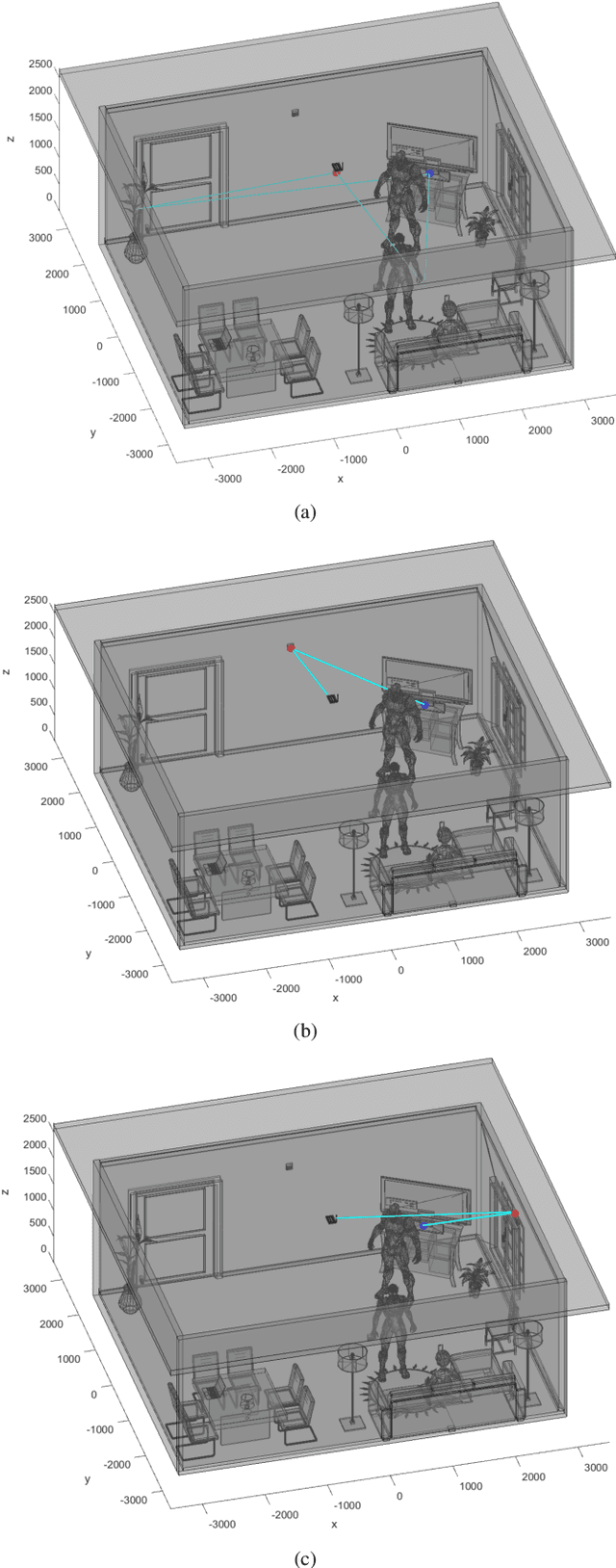
Abstract:With the fifth-generation (5G) networks widely commercialized and fast deployed, the sixth-generation (6G) wireless communication is envisioned to provide competitive quality of service (QoS) in multiple aspects to global users. The critical and underlying research of the 6G is, firstly, highly dependent on the precise modeling and characterization of the wireless propagation when the spectrum is believed to expand to the terahertz (THz) domain. Moreover, future networks' power consumption and energy efficiency are critical factors to consider. In this research, based on a review of the fundamental mechanisms of reconfigurable intelligent surface (RIS) assisted wireless communications, we utilize the 3D ray-tracing method to analyze a realistic indoor THz propagation environment with the existence of human blockers. Furthermore, we propose a distributed RISs framework (DRF) to assist the indoor THz wireless communication to achieve overall energy efficiency. The numerical analysis of simulation results based on more than 2,900 indoor THz wireless communication sub-scenarios has demonstrated the significant efficacy of applying distributed RISs to overcome the mobile human blockage issue, improve the THz signal coverage, increase signal-to-noise ratios (SNRs), and QoS. With practical hardware design constraints investigated, we eventually envision how to utilize the existing integrated sensing and communication techniques to deploy and operate such a system in reality. Such a distributed RISs framework can also lay the foundation of efficient THz communications for Internet-of-Things (IoT) networks.
Wi-Fi and Bluetooth Contact Tracing Without User Intervention
Mar 31, 2022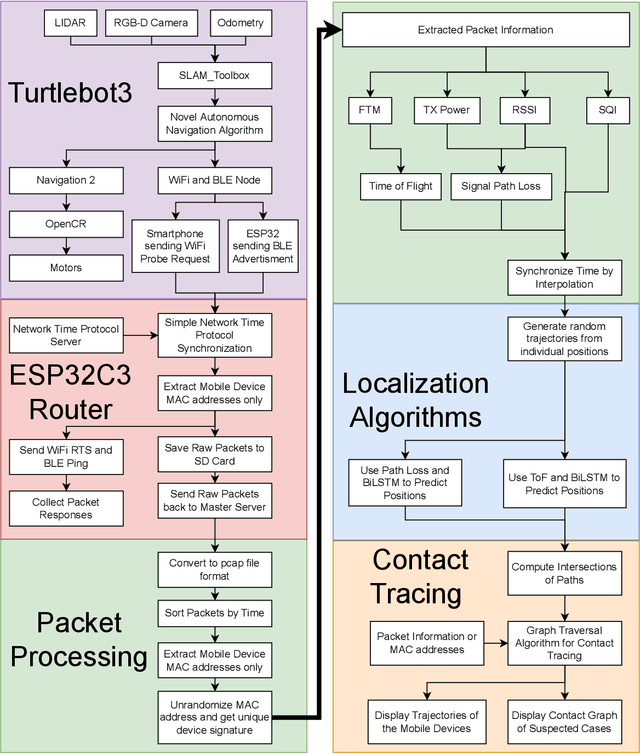
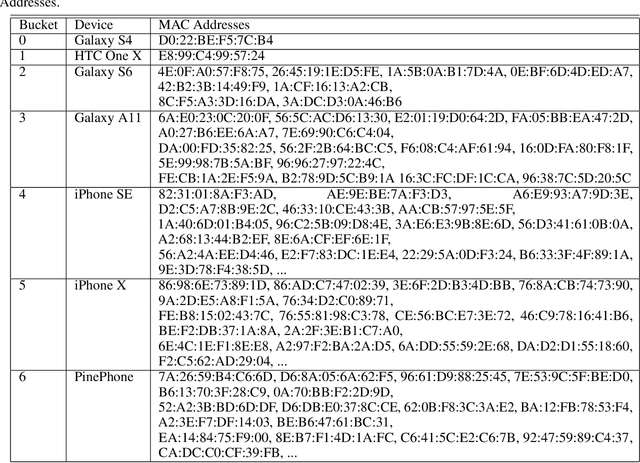
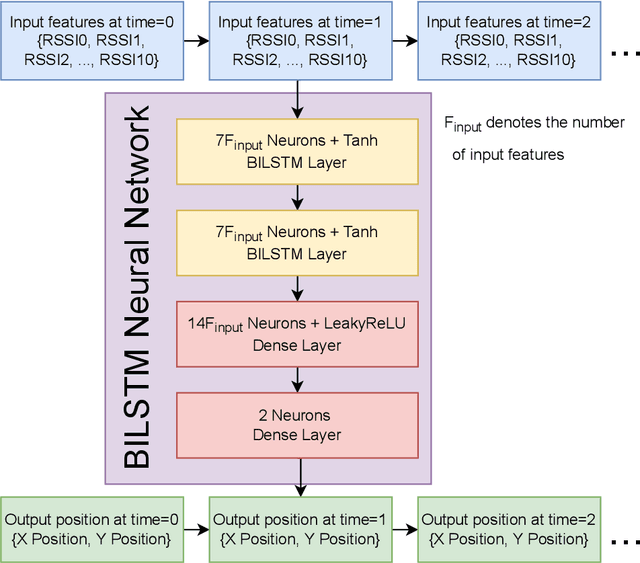
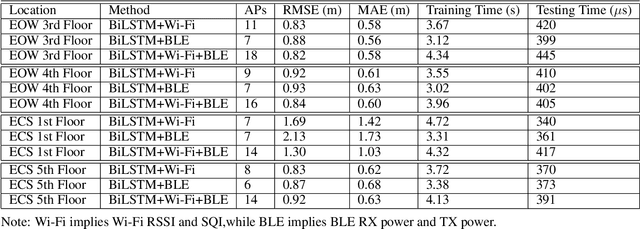
Abstract:A custom Wi-Fi and Bluetooth indoor contact tracing system is created to find detailed paths of infected individuals without any user intervention. The system tracks smartphones, but it does not require smartphone applications, connecting to the routers, or any other extraneous devices on the users. A custom Turtlebot3 is used for site surveying, where it simulates mobile device movement and packet transmission. Transmit power, receive power, and round trip time are collected by a custom ESP32C3 router. MAC randomization is defeated to identify unique smartphones. Subsequently, the wireless parameters above are converted to signal path loss and time of flight. Bidirectional long short term memory takes the wireless parameters and predicts the detailed paths of the users within 1 m. Public health authorities can use the contact tracing website to find the detailed paths of the suspected cases using the smartphone models and initial positions of confirm cases. The system can also track indirect contact transmissions originating from surfaces and droplets due to having absolute positions of users.
Passive Indoor Localization with WiFi Fingerprints
Nov 29, 2021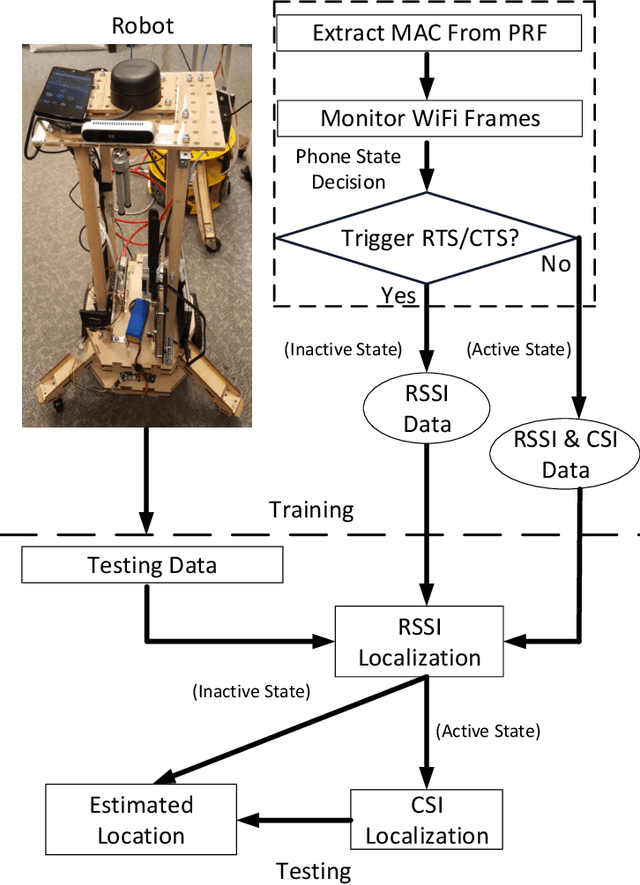
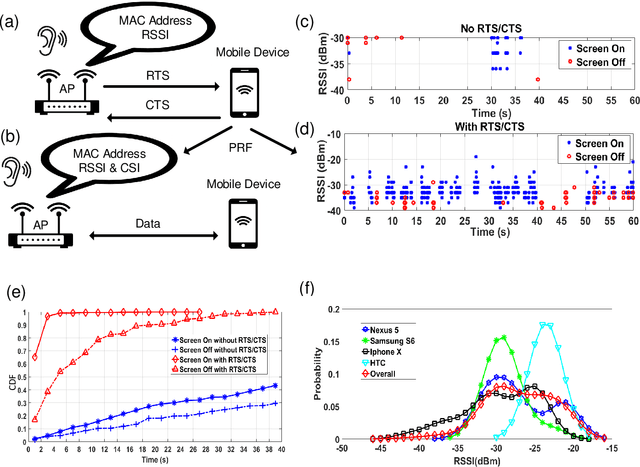
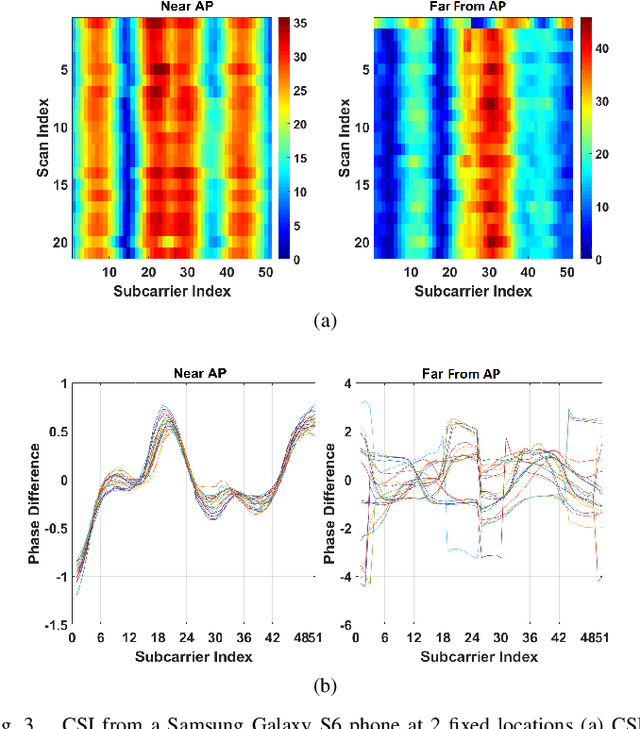
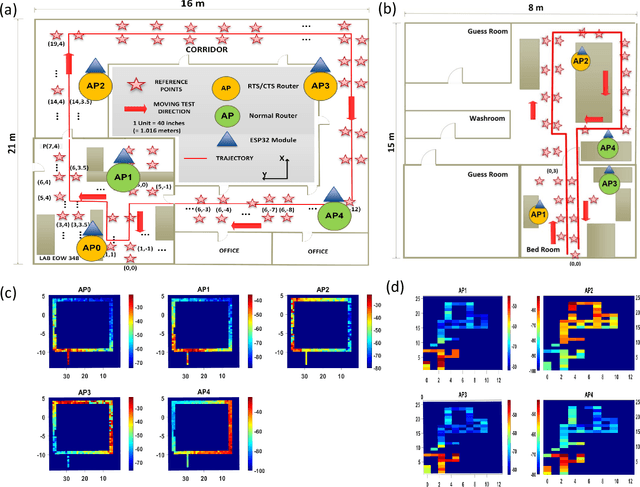
Abstract:This paper proposes passive WiFi indoor localization. Instead of using WiFi signals received by mobile devices as fingerprints, we use signals received by routers to locate the mobile carrier. Consequently, software installation on the mobile device is not required. To resolve the data insufficiency problem, flow control signals such as request to send (RTS) and clear to send (CTS) are utilized. In our model, received signal strength indicator (RSSI) and channel state information (CSI) are used as fingerprints for several algorithms, including deterministic, probabilistic and neural networks localization algorithms. We further investigated localization algorithms performance through extensive on-site experiments with various models of phones at hundreds of testing locations. We demonstrate that our passive scheme achieves an average localization error of 0.8 m when the phone is actively transmitting data frames and 1.5 m when it is not transmitting data frames.
Joint Time and Power Allocation for 5G NR Unlicensed Systems
Apr 22, 2021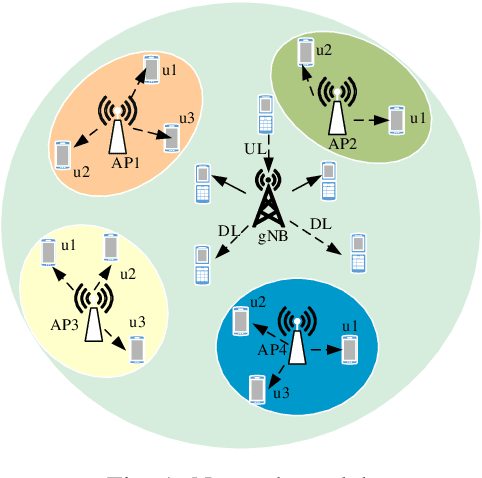

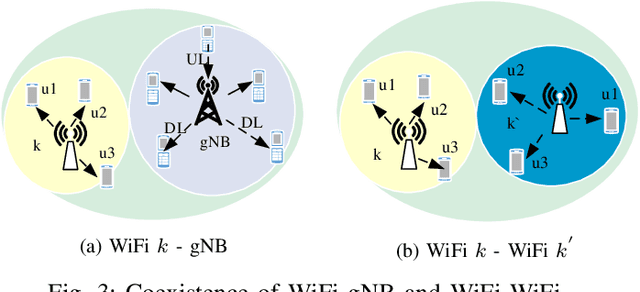
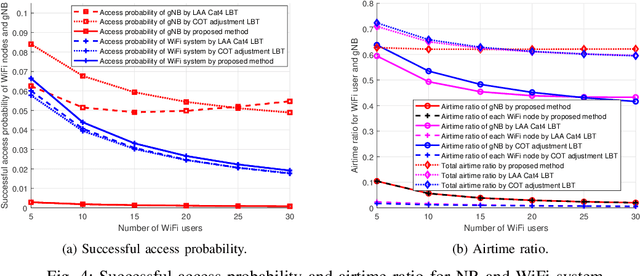
Abstract:The fifth-generation (5G) and beyond networks are designed to efficiently utilize the spectrum resources to meet various quality of service (QoS) requirements. The unlicensed frequency bands used by WiFi are mainly deployed for indoor applications and are not always fully occupied. The cellular industry has been working to enable cellular and WiFi coexistence. In particular, 5G New Radio in unlicensed channel spectrum (NR-U) supports the uplink and downlink transmission on the maximum channel occupation time (MCOT) duration. In this paper, we consider maximizing the total throughput of both downlink and uplink in NR-U by jointly optimizing the time and power allocation during MCOT while ensuring fair coexistence with WiFi. Fairness is guaranteed in two steps: 1) tuning the access related parameters of NR-U to achieve proportional fairness, and 2) including 3GPP fairness from the throughput perspective as a constraint in NR-U throughput maximization. Numerical analysis and simulation have demonstrated the superior performance of the proposed resource allocation algorithm compared to conventional deployment strategies.
Meteorologically Introduced Impacts on Aerial Channels and UAV Communications
Apr 14, 2021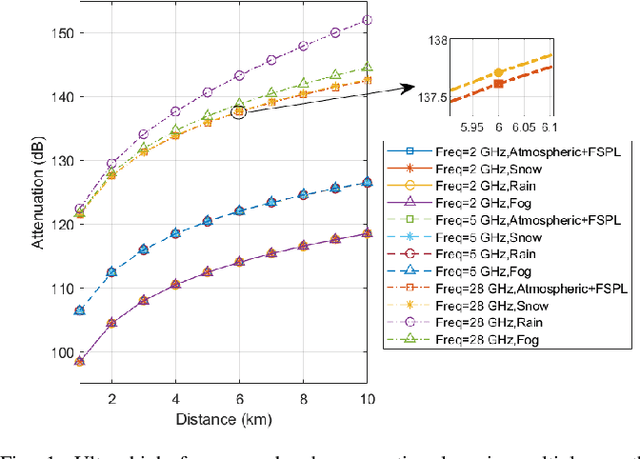
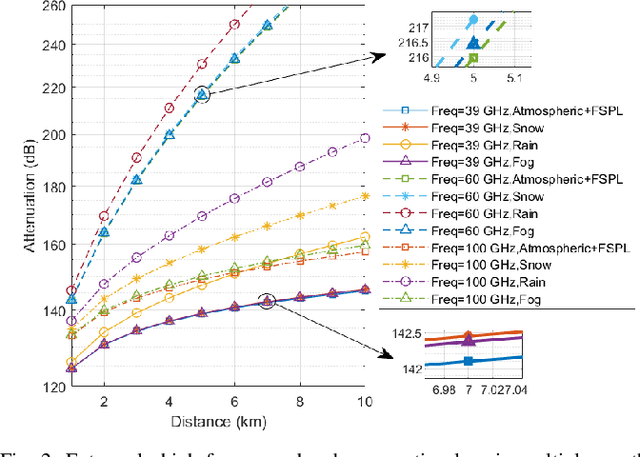
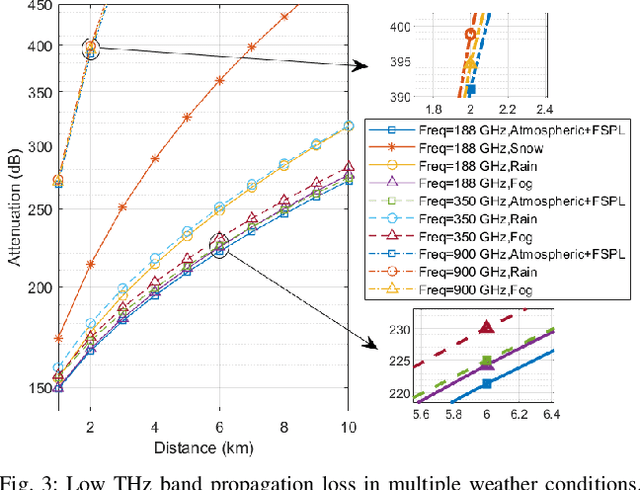
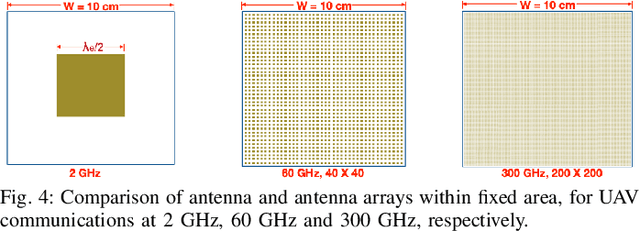
Abstract:As 5G wireless systems and networks are now being globally commercialized and deployed, more diversified application scenarios are emerging, quickly reshaping our societies and paving the road to the beyond 5G (6G) era when terahertz (THz) and unmanned aerial vehicle (UAV) communications may play critical roles. In this paper, aerial channel models under multiple meteorological conditions such as rain, fog and snow, have been investigated at frequencies of interest (from 2 GHz to 900 GHz) for UAV communications. Furthermore, the link budget and the received signal-to-noise ratio (SNR) performance under the existing air-to-ground (A2G) channel models are studied with antenna(s) system considered. The relationship between the 3D coverage radius and UAV altitude under the influence of multiple weather (MW) conditions is simulated. Numerical results show that medium rain has the most effects on the UAV's coverage for UAV communications at millimeter wave (mmWave) bands, while snow has the largest impacts at near THz bands. In addition, when the frequency increases, the corresponding increase in the number of antennas can effectively compensate for the propagation loss introduced by weather factors, while its form factor and weight can be kept to maintain the UAV's payload.
Pose-GNN : Camera Pose Estimation System Using Graph Neural Networks
Mar 17, 2021
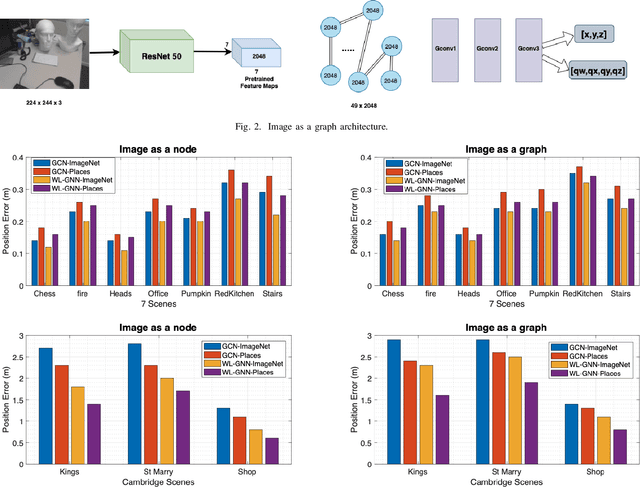


Abstract:We propose a novel image based localization system using graph neural networks (GNN). The pretrained ResNet50 convolutional neural network (CNN) architecture is used to extract the important features for each image. Following, the extracted features are input to GNN to find the pose of each image by either using the image features as a node in a graph and formulate the pose estimation problem as node pose regression or modelling the image features themselves as a graph and the problem becomes graph pose regression. We do an extensive comparison between the proposed two approaches and the state of the art single image localization methods and show that using GNN leads to enhanced performance for both indoor and outdoor environments.
Universal Activation Function For Machine Learning
Nov 07, 2020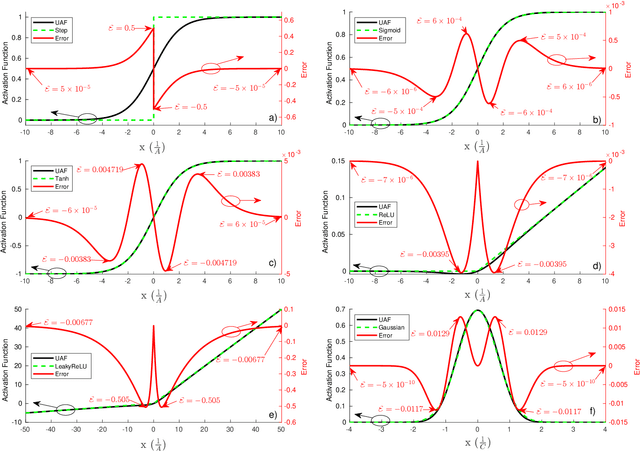
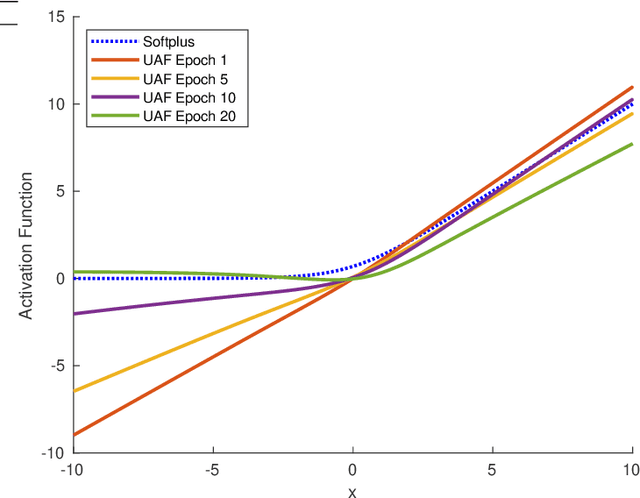
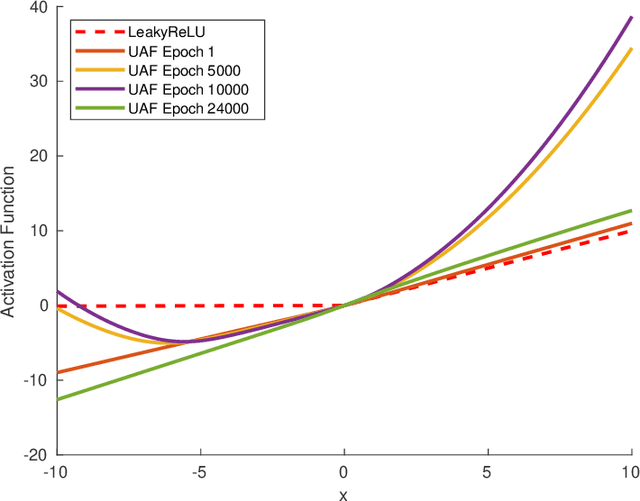
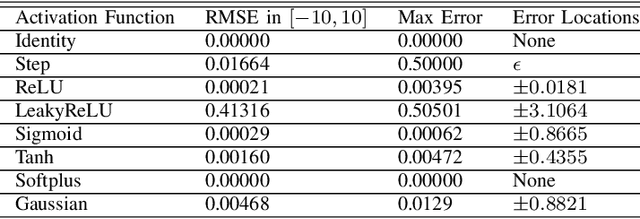
Abstract:This article proposes a Universal Activation Function (UAF) that achieves near optimal performance in quantification, classification, and reinforcement learning (RL) problems. For any given problem, the optimization algorithms are able to evolve the UAF to a suitable activation function by tuning the UAF's parameters. For the CIFAR-10 classification and VGG-8, the UAF converges to the Mish like activation function, which has near optimal performance $F_{1} = 0.9017\pm0.0040$ when compared to other activation functions. For the quantification of simulated 9-gas mixtures in 30 dB signal-to-noise ratio (SNR) environments, the UAF converges to the identity function, which has near optimal root mean square error of $0.4888 \pm 0.0032$ $\mu M$. In the BipedalWalker-v2 RL dataset, the UAF achieves the 250 reward in $961 \pm 193$ epochs, which proves that the UAF converges in the lowest number of epochs. Furthermore, the UAF converges to a new activation function in the BipedalWalker-v2 RL dataset.
A CNN-LSTM Quantifier for Single Access Point CSI Indoor Localization
May 13, 2020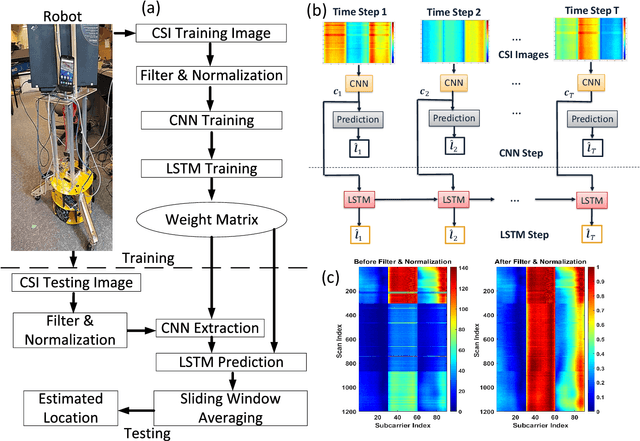
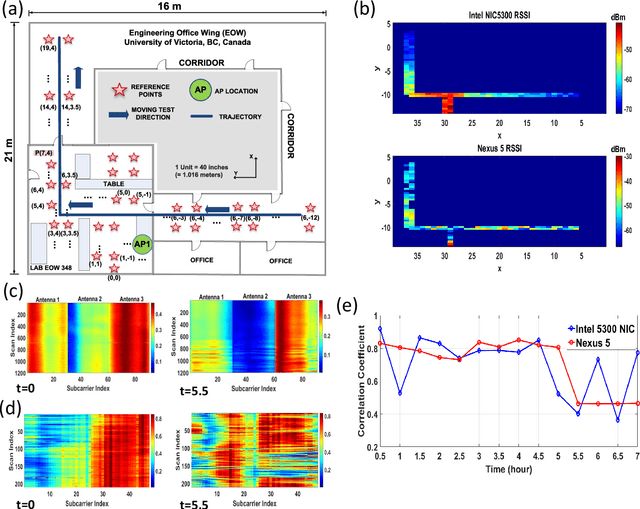
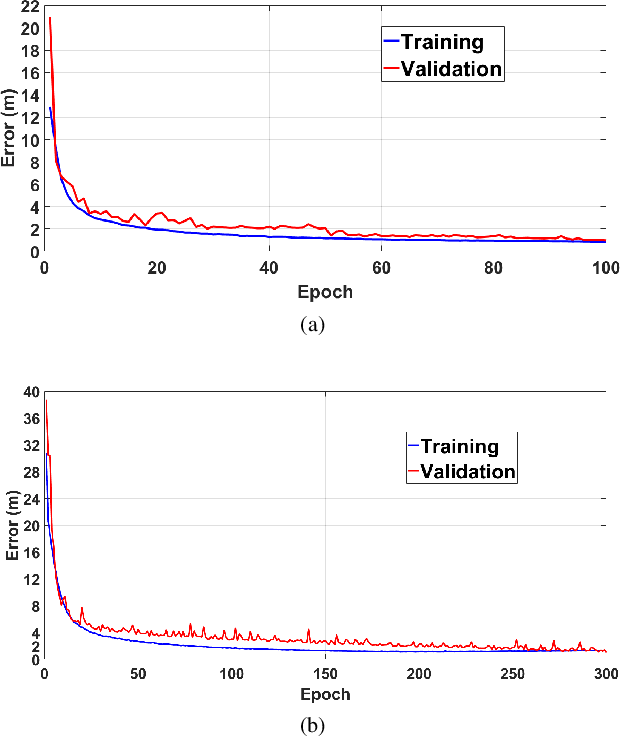
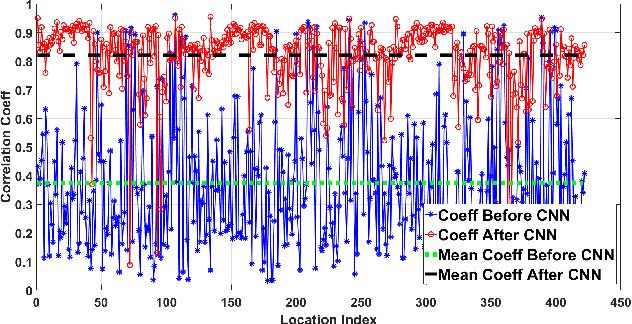
Abstract:This paper proposes a combined network structure between convolutional neural network (CNN) and long-short term memory (LSTM) quantifier for WiFi fingerprinting indoor localization. In contrast to conventional methods that utilize only spatial data with classification models, our CNN-LSTM network extracts both space and time features of the received channel state information (CSI) from a single router. Furthermore, the proposed network builds a quantification model rather than a limited classification model as in most of the literature work, which enables the estimation of testing points that are not identical to the reference points. We analyze the instability of CSI and demonstrate a mitigation solution using a comprehensive filter and normalization scheme. The localization accuracy is investigated through extensive on-site experiments with several mobile devices including mobile phone (Nexus 5) and laptop (Intel 5300 NIC) on hundreds of testing locations. Using only a single WiFi router, our structure achieves an average localization error of 2.5~m with $\mathrm{80\%}$ of the errors under 4~m, which outperforms the other reported algorithms by approximately $\mathrm{50\%}$ under the same test environment.
Semi-Sequential Probabilistic Model For Indoor Localization Enhancement
Jan 08, 2020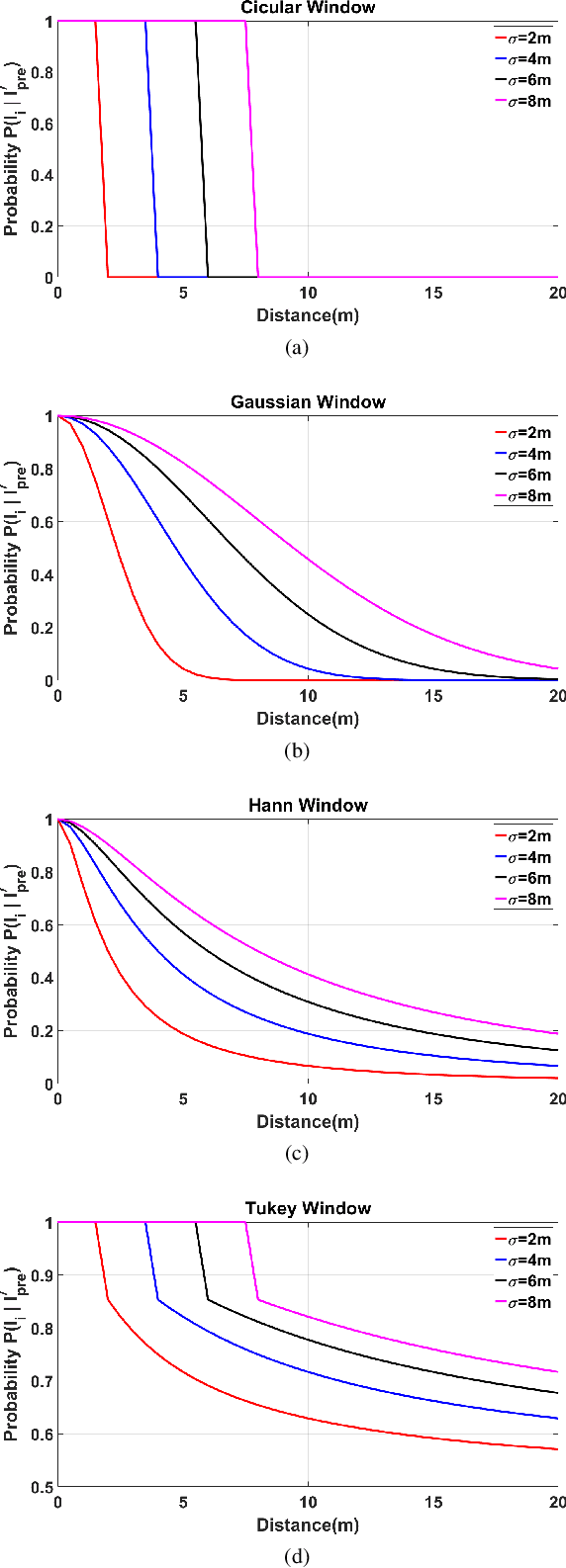
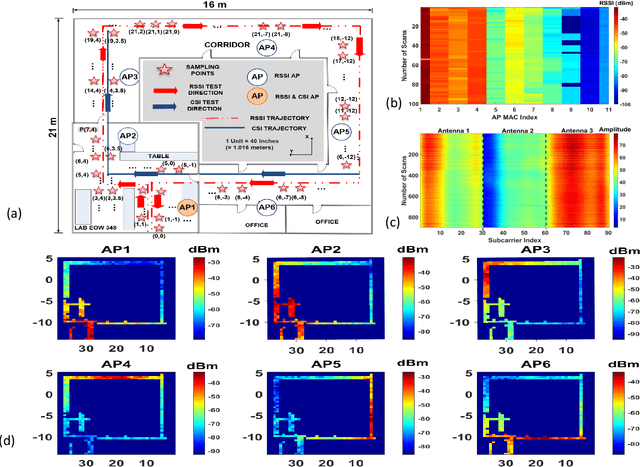
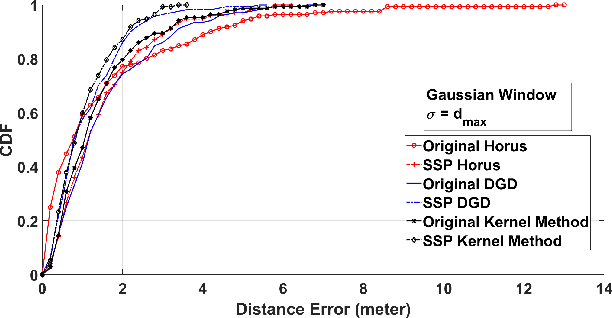
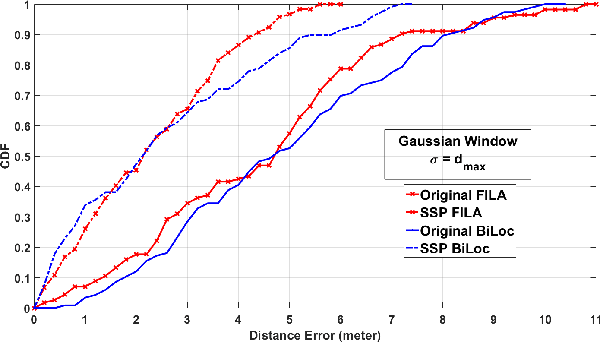
Abstract:This paper proposes a semi-sequential probabilistic model (SSP) that applies an additional short term memory to enhance the performance of the probabilistic indoor localization. The conventional probabilistic methods normally treat the locations in the database indiscriminately. In contrast, SSP leverages the information of the previous position to determine the probable location since the user's speed in an indoor environment is bounded and locations near the previous one have higher probability than the other locations. Although the SSP utilizes the previous location information, it does not require the exact moving speed and direction of the user. On-site experiments using the received signal strength indicator (RSSI) and channel state information (CSI) fingerprints for localization demonstrate that SSP reduces the maximum error and boosts the performance of existing probabilistic approaches by 25% - 30%.
Recurrent Neural Networks For Accurate RSSI Indoor Localization
Mar 27, 2019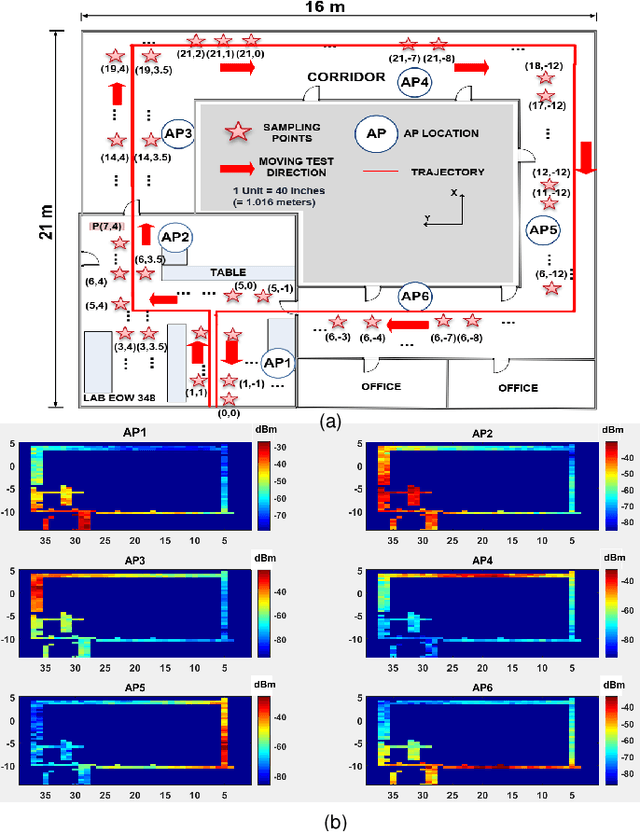
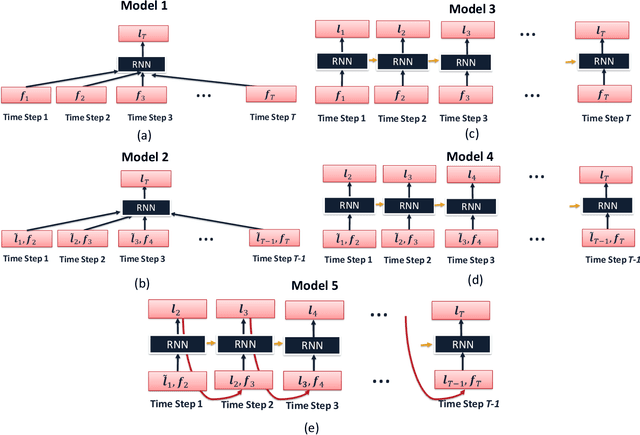
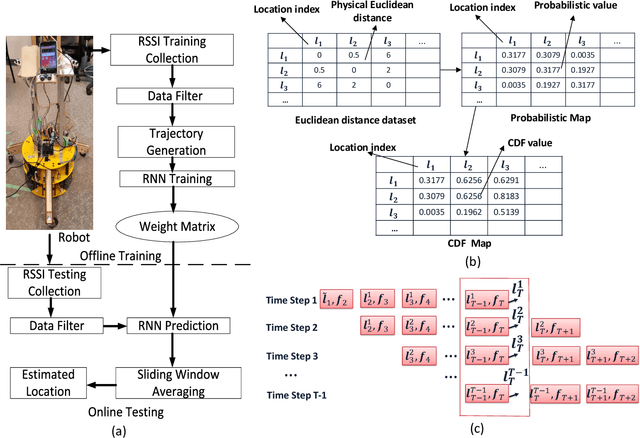
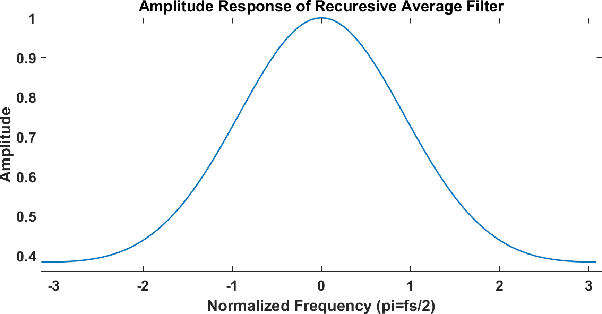
Abstract:This paper proposes recurrent neuron networks (RNNs) for a fingerprinting indoor localization using WiFi. Instead of locating user's position one at a time as in the cases of conventional algorithms, our RNN solution aims at trajectory positioning and takes into account the relation among the received signal strength indicator (RSSI) measurements in a trajectory. Furthermore, a weighted average filter is proposed for both input RSSI data and sequential output locations to enhance the accuracy among the temporal fluctuations of RSSI. The results using different types of RNN including vanilla RNN, long short-term memory (LSTM), gated recurrent unit (GRU) and bidirectional LSTM (BiLSTM) are presented. On-site experiments demonstrate that the proposed structure achieves an average localization error of $0.75$ m with $80\%$ of the errors under $1$ m, which outperforms the conventional KNN algorithms and probabilistic algorithms by approximately $30\%$ under the same test environment.
 Add to Chrome
Add to Chrome Add to Firefox
Add to Firefox Add to Edge
Add to Edge